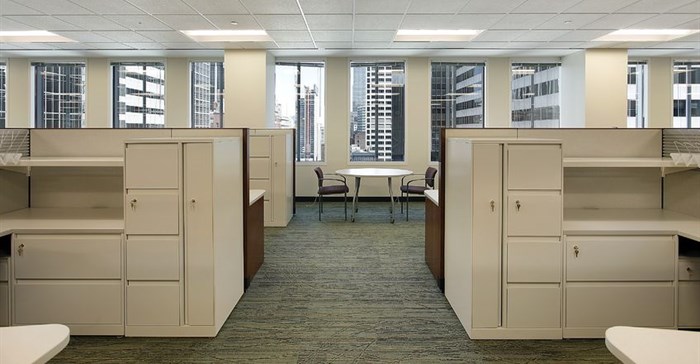
The most recent office vacancy report by the South African Property Owners Association (Sapoa) shows that at the end of March, the national office vacancy rate was 11.2%, up from 11.1% the quarter before and 25 basis points higher on a 12-month basis.
This is still lower than the global average of 12.7%, according to research by property services group Jones Lang LaSalle, but higher than the European average of 9.5% and the Asia Pacific average of 10.8%. In the Americas, the average vacancy rate is 15.1%
"The South African macroeconomic environment continues to face several headwinds and this also applies to some key drivers of the office sector. The sector's sideways trend remains intact and there is little from the economic drivers to suggest this will change in the short term," Sapoa says.
Stanlib's head of listed property funds, Keillen Ndlovu, says offices still need time to recover from the 2008-09 recession. "Landlords have to offer special incentives to attract tenants, such as giving allowances on the first year of rent."
Growthpoint Properties is offering prospective tenants its "Smartmove" incentive, where the landlord will give back 100% of the first year's rental in allowances, including office fitout and relocation costs.
Ndlovu says some big companies are moving into larger office space than they have occupied in the past but landlords are struggling to let the space they have vacated.
"The positive thing is that the level of speculative developments is not as high as before. A number of companies are consolidating operations in central and core nodes such as the Sandton CBD. These include chemicals group Sasol and law firm Webber Wentzel. Unfortunately, someone has to fill up the space that's being vacated and we have not seen that yet," he says.
Evan Robins, listed property manager of Old Mutual Investment Group's MacroSolutions boutique, says vacancy rates are likely to remain flat in many business nodes until new office developments are completed.
"The national office vacancy rate will probably come down slightly when old stock is taken out of the market but it will be stagnant overall for the rest of this year and much of next.
"We have a musical chairs situation where some blue chip companies are swapping offices but until new offices are built in nodes such as Sandton, Rosebank and Bryanston in Gauteng, for example, the office sector is set to battle," he says.
Robins says there will be more office developments built around the route taken by the Gautrain, but "it will be a long process for vacancies to come down strongly".
Most of the existing office developments are located in Sandton. As much as 44.3% of the developments in SA are in that suburb, followed by 6.4% in Randburg, Gauteng.
Cape Town barely features, with only 5.1% of new developments sitting in the Century City hub. Only another 3% of the developments are in other parts of the Western Cape.
Sapoa says that in the first quarter of this year, the highest graded office properties achieved the best improvement in vacancy levels.
"The latest quarter saw an improvement in the vacancy rate of better quality offices with the A- and P-grade segments recording vacancy declines of 30 and 10 basis points respectively.
"Secondary offices continue to underperform and during the past quarter, B- and C-grade offices saw their vacancy rates increase by 80 and 30 basis points respectively."
In terms of Sapoa's official definitions, a P-grade office refers to a "top-quality, modern space which is generally a pacesetter in establishing rentals".
A-grade offices are generally not older than 15 years or have had a major renovation and their market rental is near the top of the range in the area where they are located.
B-grade refers to generally older buildings that have accommodation and finishes close to modern standards as a result of renovations from time to time. C-grade buildings are the oldest and tend to lack modern finishes and services.
As much as 31.9% of South African listed property is office, according to research by Afrifocus and Stanlib Research.
Source: Business Day

For more than two decades, I-Net Bridge has been one of South Africa’s preferred electronic providers of innovative solutions, data of the highest calibre, reliable platforms and excellent supporting systems. Our products include workstations, web applications and data feeds packaged with in-depth news and powerful analytical tools empowering clients to make meaningful decisions.
We pride ourselves on our wide variety of in-house skills, encompassing multiple platforms and applications. These skills enable us to not only function as a first class facility, but also design, implement and support all our client needs at a level that confirms I-Net Bridge a leader in its field.
Go to: http://www.inet.co.za